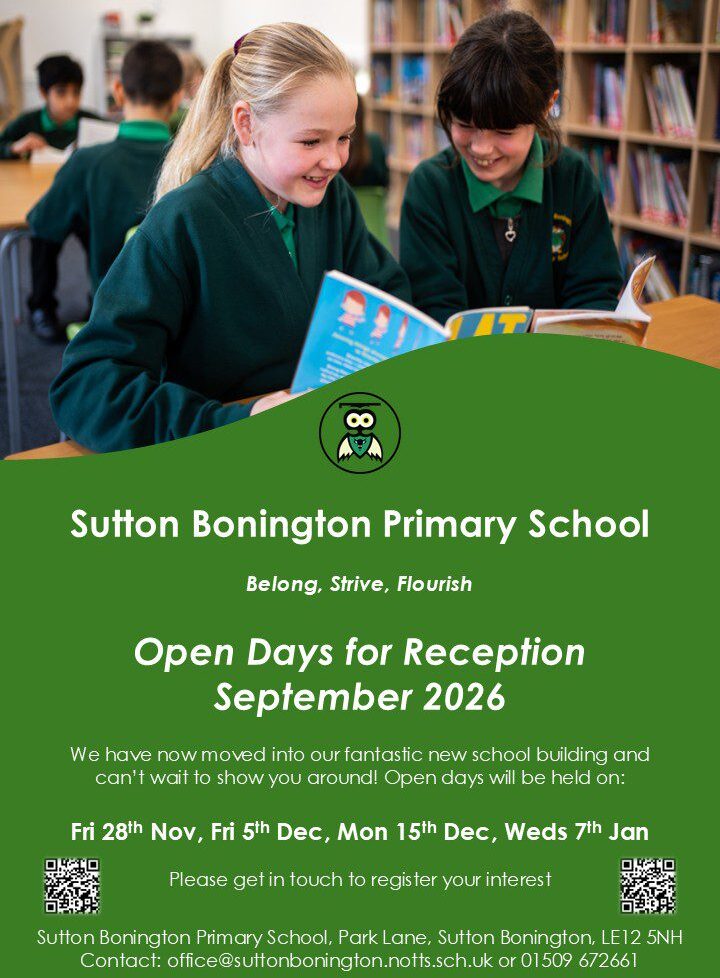Curriculum Intent
At Sutton Bonington Primary School, we teach children that Geography is the study of the world around us and the places and processes that occur within it. We want to inspire in our learners a passion for Geography and a curiosity to learn more about it in a range of different ways.
Our intention for Geography is for children to:
- Understand that geography is the study of planet Earth and how the people who live on earth interact with it (physical and human characteristics).
- Understand that studying geography is about being curious about the world and its people.
- Be able to use maps, diagrams, globes, aerial photographs, a compass, grid references, symbols and other geographical information sources with accuracy to build their understanding of locational knowledge, human and physical geography.
- Be able to carry out age appropriate field work (observe, measure, record) using relevant tools for measurement and associated geographical observation techniques e.g. sketch maps, digital technologies, drawing plans.
- Be able to name and locate specific and significant places, regions and features on a variety of maps, initially within the local area and then broadening to include the wider world
- Comment on the types and impact of human geography e.g. settlements, land use, economic activity, distribution of natural resources.
Our curriculum intent is in line with that of the National Curriculum for Geography.
Curriculum Implementation
Children take part in three Geography units per year. These are taught within a half term in line with our coverage document.
The units of work are well sequenced to provide a coherent subject scheme that develops children’s geographical knowledge, skills and subject disciplines. Units start by looking at concepts such as the location, space and scale of a given locality before moving on to look at human and physical geography. Opportunities for fieldwork are exploited where possible before spending time exploring geographical issues that affect the place being studied. The specific content of each unit is drawn from our knowledge and skills progression document to ensure appropriate pitch for the different year groups. Each unit also sets out key vocabulary that children are expected to be able to use in a knowledge organiser, along with each lesson’s key knowledge. Units contain approximately 6 lessons.
Children’s written work and photographs are recorded in their topic book. Each piece of work is dated and includes a learning objective in the form ‘to know…’ or ‘to know how…’
Within the Early Years Curriculum, children in Reception experience the Geography curriculum through the ‘People, Culture and Communities’ early learning goal.
Adaptations for children with special educational needs and disabilities are made in line with our SEND Curriculum Adaptations document. These may include the use of additional scaffolding, explicit instruction, cognitive and metacognitive strategies, flexible groupings and use of specific resources or technology.
Where possible, opportunities for curriculum enrichment within Geography are exploited. For example, children may visit places of geographical interest, such as local rivers and the wider local area. They may take part in activities to help improve the school and local environment including litter picking and planting flowers.
Opportunities for children’s spiritual, moral, social and cultural development through History are also explored where appropriate. For example, Geography will be used to promote a sense of appreciation for our planet and the endless opportunities that exist for us to help sustain it. Children may also be required to consider and comment on moral dilemmas around key geographical issues (e.g. climate change, natural disasters). Socially, children will be able to work together when completing fieldwork tasks and will also compare and contrast a range of environments across the world, promoting an understanding of how we live in a modern and well-developed country. Children will also be given the opportunity to develop an understanding of what life is like for people in different parts of the world, helping to grow their understanding and respect for different cultures, faiths and backgrounds.
Curriculum Impact
Through the explicit teaching of the history curriculum, teachers and pupils assess their learning throughout the lesson (AFL). Within the units, pupils take part in low stakes quizzes to help practice knowledge retrieval and at the end of a unit in Key Stage 2, learners complete short summative tasks, which provide opportunities for more focused assessment of knowledge acquisition. This then helps our learners to build a schema of connections of concepts and knowledge which they can retrieve throughout their continued learning journey in Geography. We hope pupils will be encouraged to undertake research independently to further their own enjoyment across a range of Geography topics.
We assess the impact of our curriculum through examining children’s work, talking with and questioning children as well as making observations and setting specific tasks. Teacher assessment is ongoing throughout the year with a formal summative assessment made and recorded at the end of the summer term.


